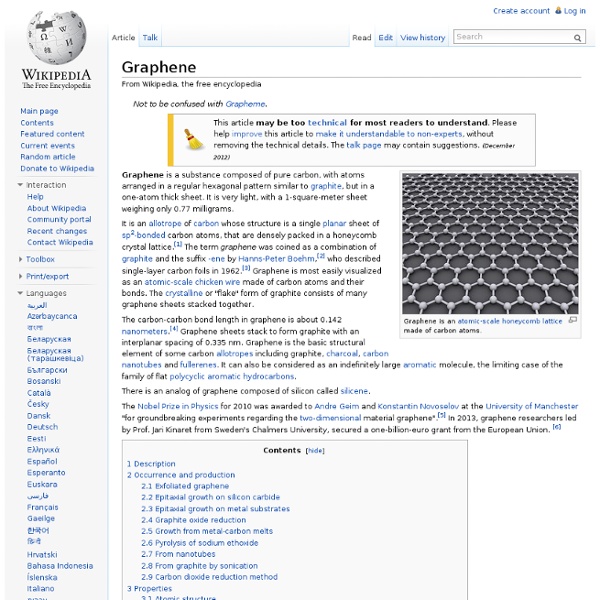Unzipping Carbon Nanotubes Can Make Graphene Ribbons
(PhysOrg.com) -- By "unzipping" carbon nanotubes, researchers have shown how to make flat graphene ribbons. Graphene, which is a one-atom-thick sheet of carbon that looks like chicken wire, has unique electrical properties that could have many future electronics applications. However, one of the biggest challenges researchers currently face is producing graphene in large quantities. Recently, two research groups have demonstrated that unzipping carbon nanotubes can produce graphene ribbons in a variety of widths. In the first group, scientists at Rice University in Houston led by James Tour used sulphuric acid and an oxidizing agent to chemically create a hole in the carbon nanotubes. The researchers suggest that this type of graphene ribbon could be used for conductive or semiconducting thin films, and possibly as an inexpensive substitute for monocrystalline silicon in photovoltaics. © 2009 PhysOrg.com Explore further: Polymer microparticles could help verify goods
Graphene Outperforms Carbon Nanotubes for Creating Stronger, Mor
(PhysOrg.com) -- Three new studies from researchers at Rensselaer Polytechnic Institute illustrate why graphene should be the nanomaterial of choice to strengthen composite materials used in everything from wind turbines to aircraft wings. Composites infused with graphene are stronger, stiffer, and less prone to failure than composites infused with carbon nanotubes or other nanoparticles, according to the studies. This means graphene, an atom-thick sheet of carbon atoms arranged like a nanoscale chain-link fence, could be a key enabler in the development of next-generation nanocomposite materials. “I’ve been working in nanocomposites for 10 years, and graphene is the best one I’ve ever seen in terms of mechanical properties,” said Nikhil Koratkar, professor in the Department of Mechanical, Aerospace, and Nuclear Engineering at Rensselaer, who led the studies. Epoxy materials infused with graphene exhibited far superior performance. The second advantage is surface area.
Materials
A couple of stories about interesting, new materials caught my eye and I thought I might pass them along. The lightest solid In the picture above a 2.5kg brick is supported by 2gm worth of aerogel . Aerogel, which is formed by a process somewhat similar to freeze-drying by removing the water from silica gel and replacing it with gas, in this case probably carbon dioxide, has been around since the 1930’s. It was first produced to settle a bet. Applications that have been suggested include use as a building material which would be resistant to fire or blast, as armor, and for use in sporting equipment. Aerogel is also being tested for future bombproof housing and armour for military vehicles. Aerogel was used in the NASA/JPL Stardust mission to collect cometary particles and interstellar dust. I wonder if it might have aerospace or automotive applications, too. The thinnest solid Graphene is a new material—a gauze of carbon atoms just one atom thick:
Sci-Tech : Graphene: a novel material with myriad uses
After the discovery of one form of carbon — fullerenes — was awarded the Nobel Prize in Chemistry in 1996, this year's Nobel Prize for Physics was awarded to Andre K. Geim and Konstantin S. Novoselov, both at the University of Manchester, U.K., for succeeding in producing, isolating, identifying and characterizing another form of carbon — graphene. Anyone who has used an ordinary pencil has probably produced graphene-like structures, but without knowing it. Graphene, a single atomic layer of carbon, is the first two-dimensional (2D) crystalline material that has been identified and analyzed. It is a transparent conductor which is one atom thin. The thermal and electrical conductivity is very high and it can be used as a flexible conductor. Different forms Carbon can exist in several different forms. A new form of molecular carbon is the so called fullerenes. Though the existence of grapheme-like structures was already known in the 1960s, isolating single layers proved difficult.



